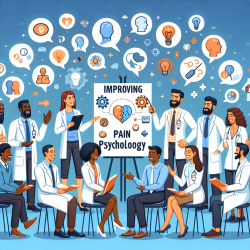Introduction
In the digital age, electronic media has become an integral part of daily life, especially for young people. With children and adolescents spending an average of seven hours a day engaged with various forms of media, it's essential to understand how these platforms can be used as tools for coping with stress. Recent research, such as the study titled "Is There a Need to Modify Existing Coping Scales to Include Using Electronic Media for Coping in Young People?", highlights the potential benefits of incorporating electronic media into coping strategies for youth.
The Role of Electronic Media in Coping
While traditional coping mechanisms have long been studied, the role of electronic media in stress management is a relatively new area of exploration. This research suggests that electronic media can serve as a form of mood management and social compensation, offering benefits such as increased self-esteem and perceived social support. By facilitating communication and self-expression, electronic media can aid in emotional relief and provide a platform for social interaction.
Implications for Practitioners
For practitioners in speech-language pathology and related fields, understanding the impact of electronic media on youth coping strategies is crucial. Here are some actionable insights based on the research findings:
- Assessment Adaptation: Consider modifying existing coping assessment scales to include questions about electronic media usage. This can provide a more comprehensive understanding of a child's coping mechanisms.
- Encouraging Positive Use: Guide young clients in using electronic media positively, such as engaging in online support groups or using messaging apps for emotional relief.
- Monitoring Media Consumption: Help families set healthy boundaries around media use, ensuring it complements rather than detracts from face-to-face interactions.
Further Research and Development
The study underscores the need for further research into the role of electronic media as a coping strategy. Practitioners are encouraged to contribute to this growing field by exploring how media can be integrated into therapeutic practices. Developing new assessment tools that reflect the digital realities of today's youth will be instrumental in enhancing our understanding and support of young people's mental health.
Conclusion
As we navigate the complexities of the digital era, it's vital to recognize the dual nature of technology as both a challenge and an opportunity. By embracing electronic media as a potential coping strategy, we can empower young people to manage stress effectively and foster resilience. For practitioners, this means staying informed and proactive in adapting to these evolving dynamics.
To read the original research paper, please follow this link: Is There a Need to Modify Existing Coping Scales to Include Using Electronic Media for Coping in Young People?










